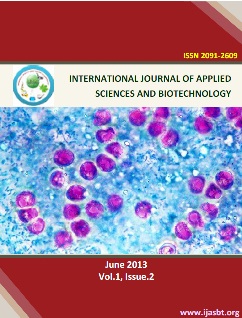Influence of corn (Zea mays L) seed processing with a locally produced sheller on seed quality and their damage
DOI:
https://doi.org/10.3126/ijasbt.v1i2.8198Keywords:
maize corn sheller, hand sheller, CBSP Group, seed quality analysisAbstract
Maize (Zea mays dis.L.) is one of the most important staple crops in the world. Sindhupalchok, Kavre and Nuwakot were the three districts selected for the maize CBSP groups under the respective Agriculture Development Offices identified by CDD for the present study. Altogether 2x6x3 samples for the study were collected. Seed damage as broken seeds, damages on embryo, seed quality assessments like seed moisture content, pure seed percentage, seed vigor measured by root and shoot length, seed germination, and embryo damages were carried in seed testing laboratory in Seed Science & Technology Division (SSTD) Khumaltar following the ISTA Rules, 2007. For the embryo damage test, tetrazolium salt test (TZ) was conducted following the procedures prescribed for maize seed in ISTA Rules, 2007. All the samples possessed of 99 % of pure seed. It ranged from 99.51 % in Nuwakot to 99.96 % in Kavre for samples using corn sheller. They were found within the standards for pure seed and were of acceptable range. The corn sheller was found as efficient as that of hand shelling. There was not found the effect on the quality of seed that they were within the standard values. The germination percentage decreased from initial 96 to 85 (Kavre); 94 to 87 (Sindhupalchwok) and 91 to 83 (Nuwakot). This study concludes that the corn sheller techniques offer Wooden corn sheller is a simple but traditional device made locally for shelling the maize kernels and distributed to Community based seed production (CBSP) farmers contribute to minimizing the impacts of hand sheller on agricultural systems.
DOI: http://dx.doi.org/10.3126/ijasbt.v1i2.8198
Int J Appl Sci Biotechnol, Vol. 1(2): 68-71




